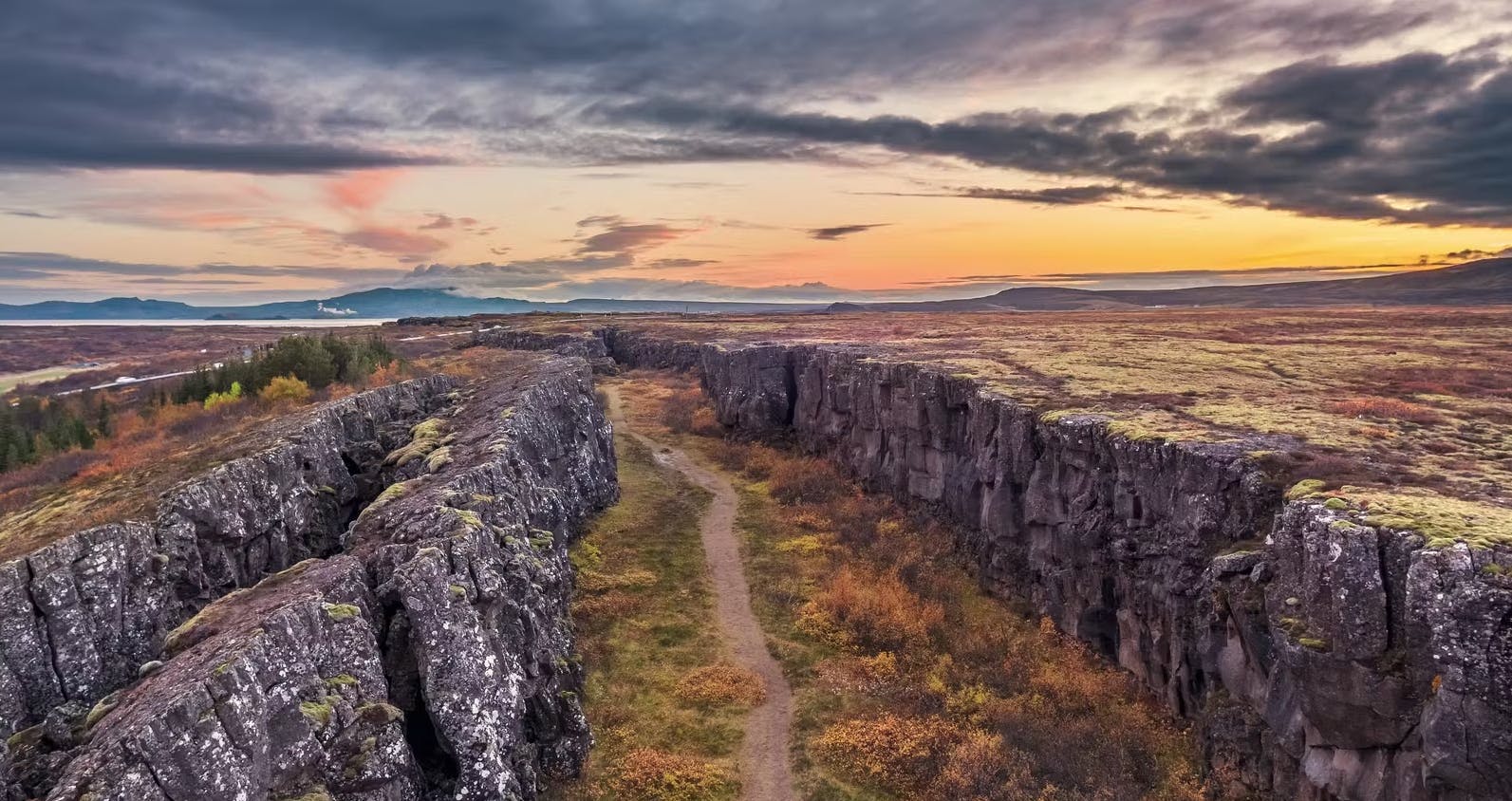
Exploring the Rich History of Þingvellir
Historical Review of Þingvellir
Þingvellir, in the south region of Iceland, is one of those places that live in the hearts and minds of Icelanders. It plays a big role in the history of Iceland. It marks the beginning, as Þingvellir parliament was founded in 930, only 56 years after the first Vikings settled in Iceland. This is the place where our first settlers made laws and settled disputes.
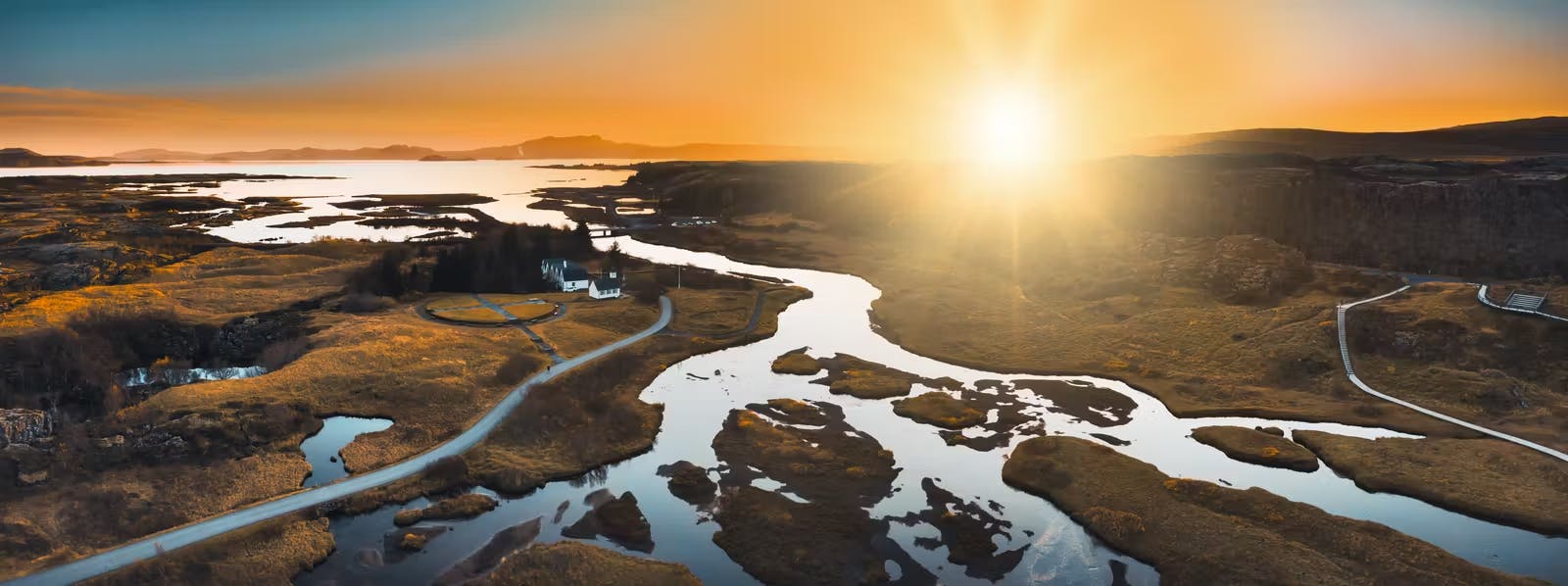
Þingvellir is where Icelanders abandoned paganism and embraced Christianity. It holds a deep history marked by the sorrow of numerous executions. Yet, it is also a site of jubilation, where Icelanders celebrated their independence. So, if you are wondering if Þingvellir is worth visiting in Iceland, keep reading, and we will assure you it is.
Learn About Iceland's Geological Wonders
At Perlan Museum in Reykjavík, you can experience all the geological wonders that Iceland has. Here, you can go in-depth into the different aspects of Icelandic nature. With several exhibitions covering subjects such as the water in Icelandic nature, glaciers and ice caves, the power of volcanoes, earthquakes, and geothermal energy - Perlan truly lets you explore Iceland in one place.
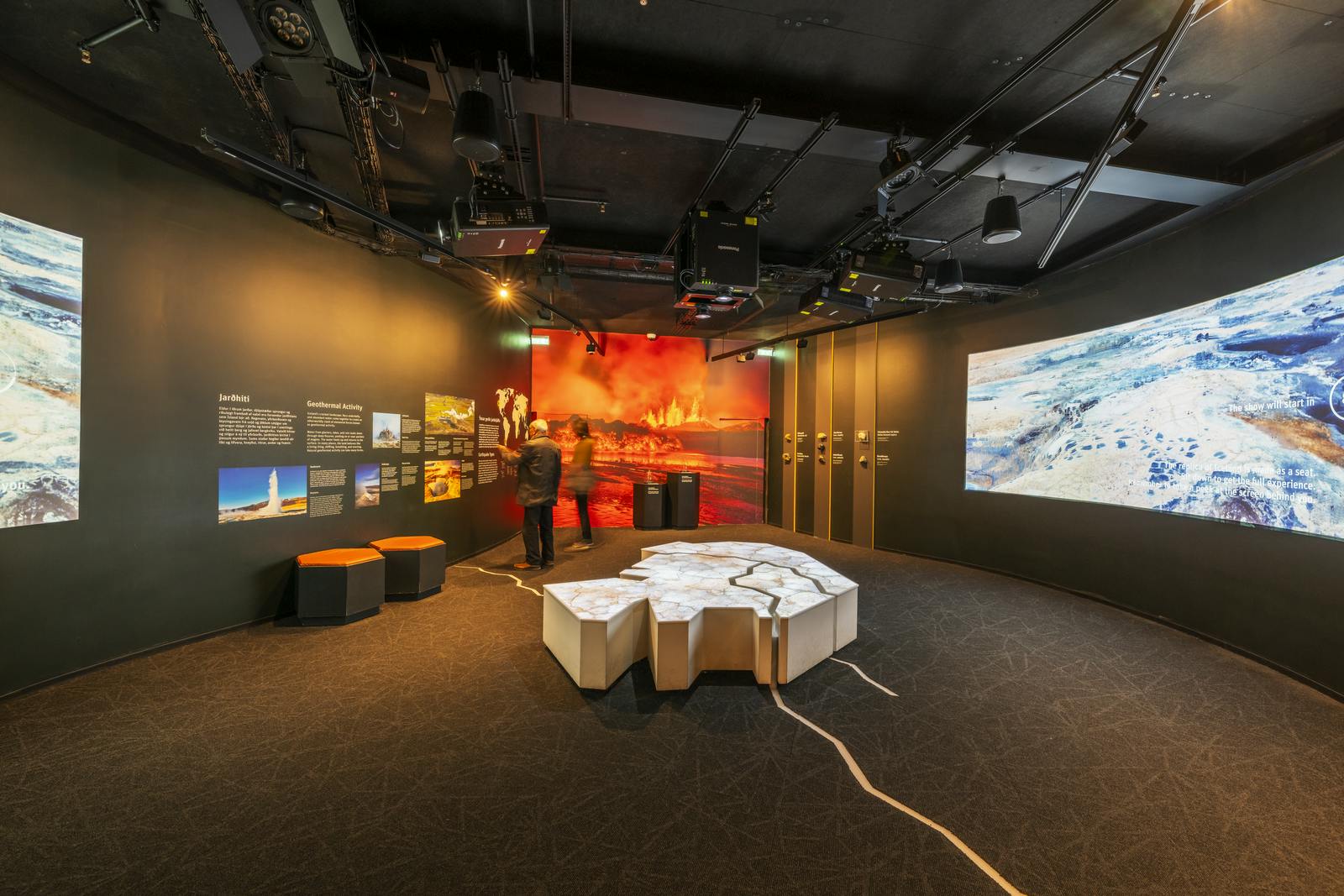
Almannagjá
Almannagjá is one of the most beautiful places you will see in Þingvellir. Almannagjá is a 7.7 km long fissure where the greatest width is 64m. There, you can stand right on top of an active rift zone where the Eurasian plate and the North American plate are drifting apart. However, if you want to see the movement, you will have to stand there for a few hundred years as the movement happens very slowly.
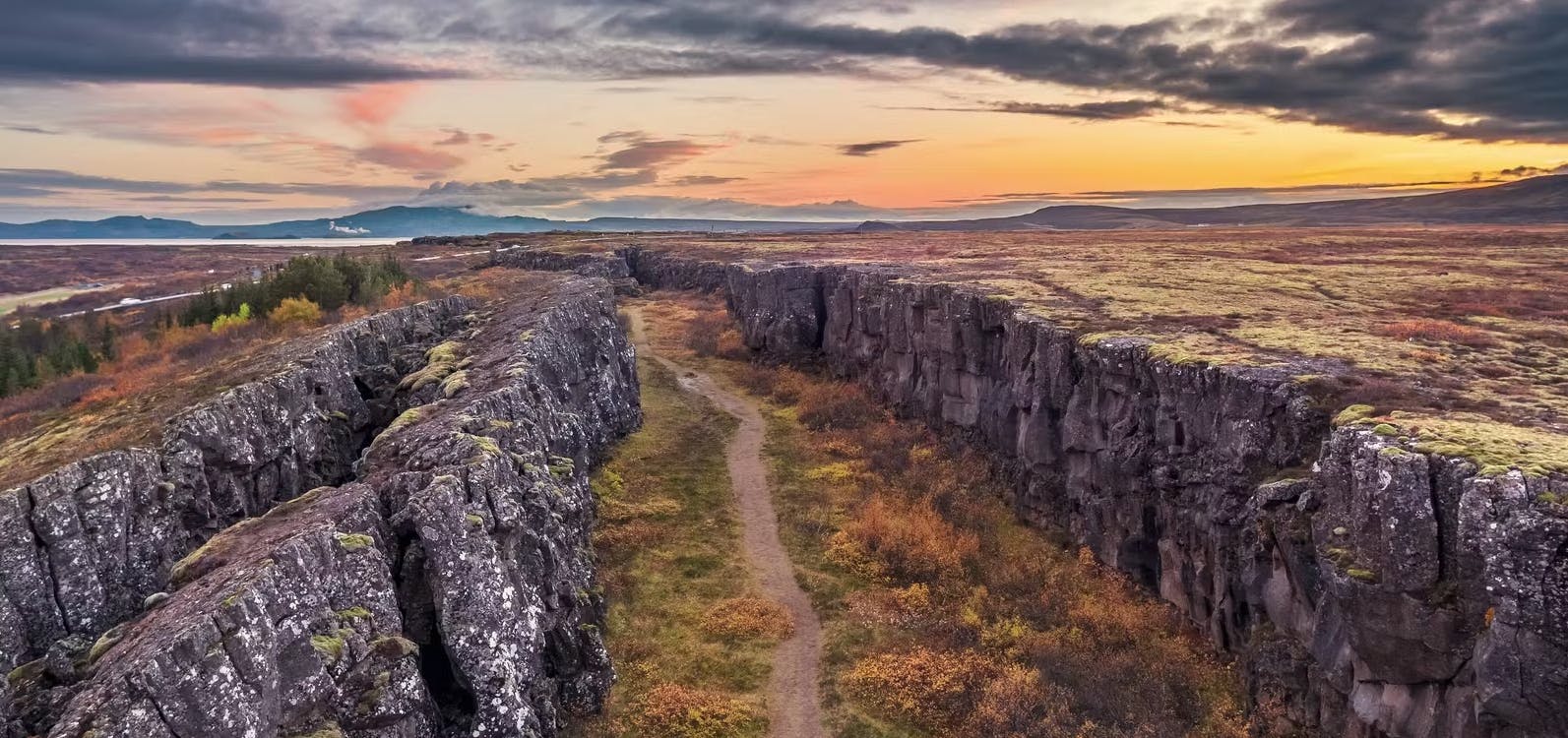
Þingvellir Church
Shortly after Christianity was adopted in Iceland, the church at Þingvellir was constructed. Its location was chosen not for the beauty of the surroundings but for its practicality. The area offered ample grass and water for sheep and horses, and old highways provided easy access to Þingvellir.
The wood used to build the church came from the king of Norway as a gift, together with a bell used for parliamentary sessions. The church was used not only for celebrating the nation's Christianity but also for political meetings.
The current church at Þingvellir was rebuilt in 1859, with the spire being reconstructed and modified in 1907. The spire houses three bells: one ancient, another donated by Bishop Jón Vídalín in 1698, and the third used to ring in Iceland's independence in 1944.
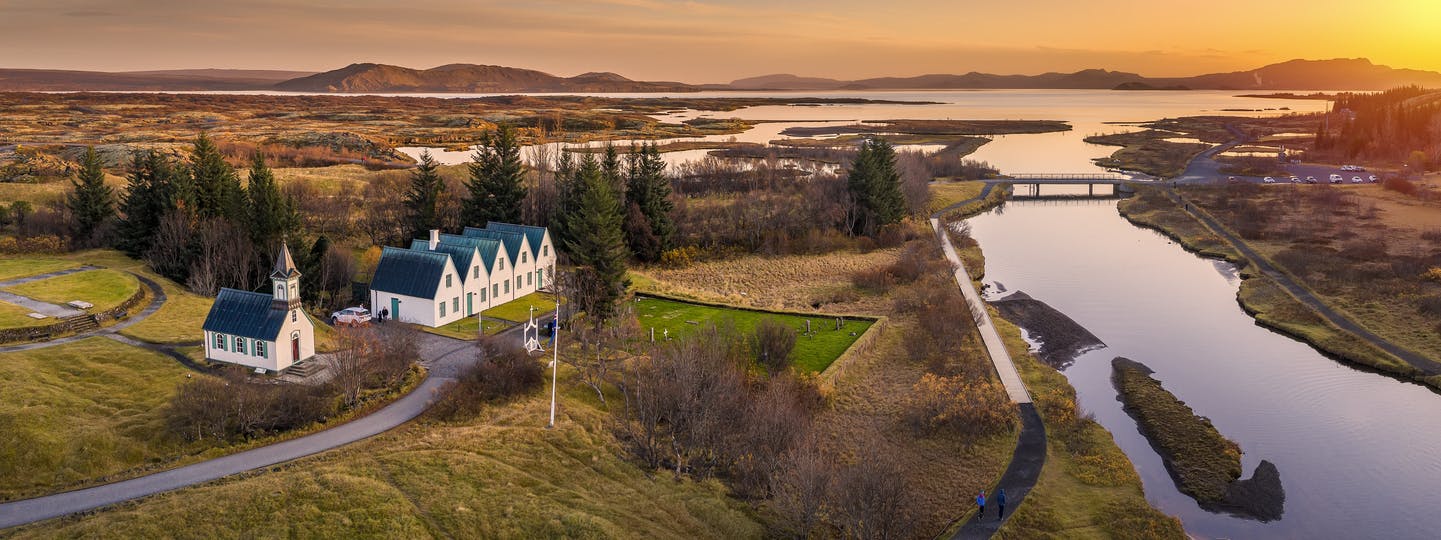
Flosagjá
Flosagjá, one of the main faults at Þingvellir, features clear water up to 25 meters deep. Where it meets the main assembly site, it forms a prolonged fork, with the eastern branch named Nikulásargjá after Nikulás Magnússon, a sheriff who drowned there in 1742. In 1907, a bridge was built over the fault, and visitors began throwing coins into the water. This part of the fault is now known as Peningjagjá ("Money Fault"), symbolizing the significant natural resource that water represents.
The path leading to the fissure is called Kongastígurinn (King's Road), created for the king of Denmark to showcase the greatness of Iceland. This was the first and largest road construction in Iceland.
Silfra
Silfra is an open water-filled fissure on Þingvallavatn Lake's shore within the National Park. It was formed by the tectonic drift between the Eurasian and North American plates. The Þingvellir valley features cracks and fissures caused by tension buildup along the tectonic plate boundary. Silfra intercepts a major aquifer, constantly fed by groundwater, resulting in exceptionally clear water. This clarity makes it a prime spot for scuba divers and snorkelers, who can swim between two continental plates.
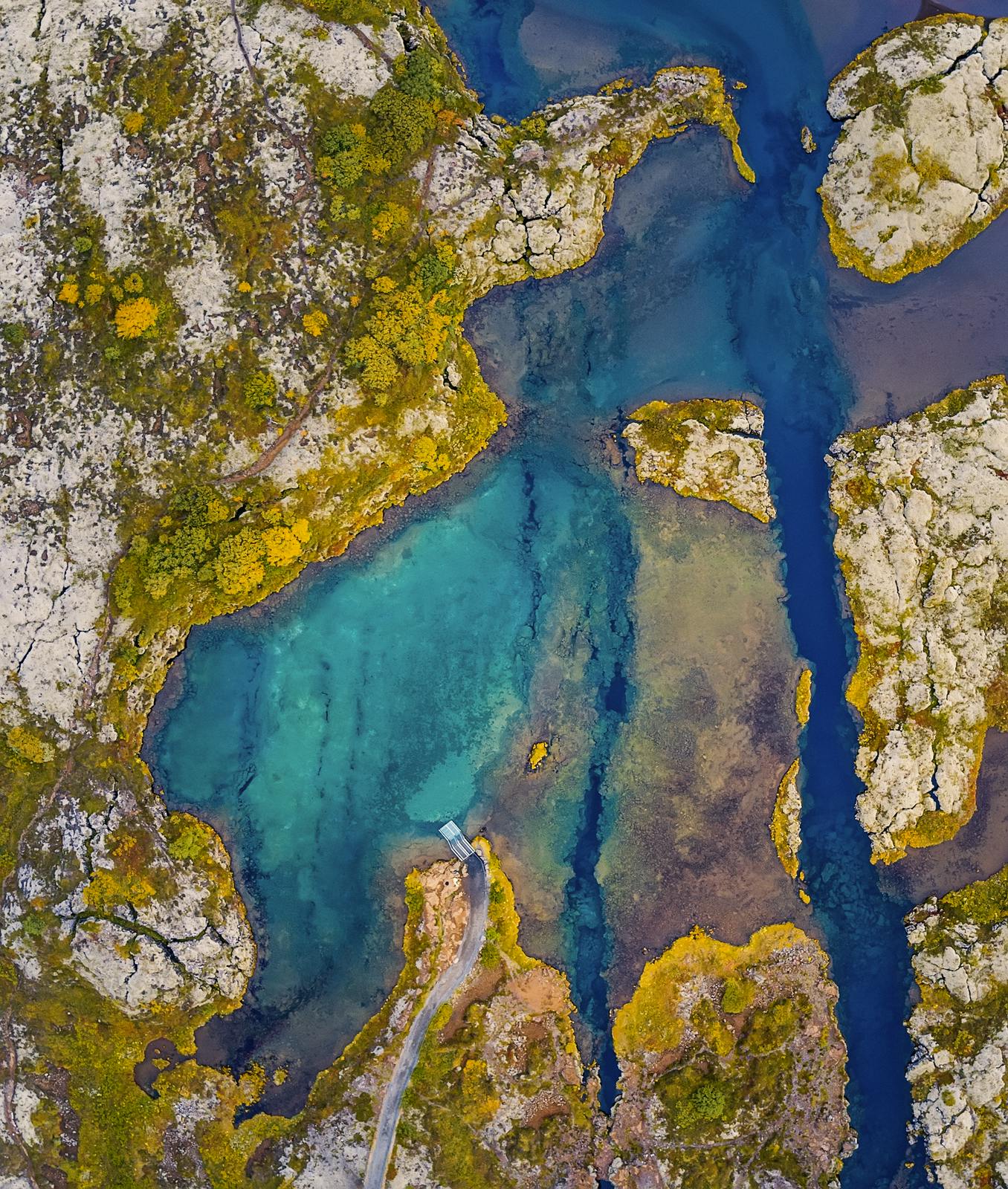
Lögberg – The Law Rock
Lögberg is the historic site of the old Alþingi (parliament), established around AD 930. During the Old Commonwealth period (930-1262), the Alþingi wielded legislative and judicial powers. Every summer in late June, people from across the country gathered at Alþingi to hear speeches on important national issues. The law speaker, who recited the laws of the Commonwealth, was the most powerful person during these sessions but held no official power in between.
The location of Lögberg is not precisely known as the role of Lögberg disappeared early in history when Icelanders took allegiance to the Norwegian king in 1262 with a special covenant, Gamli sáttmáli. Many people do believe that Lögberg was located in the Almannagjá, up against the higher rock wall. That location would have been convenient as the rock wall would work as an amplifier for the speaker. Alþingi moved to downtown Reykjavík in 1844, where it still stands.
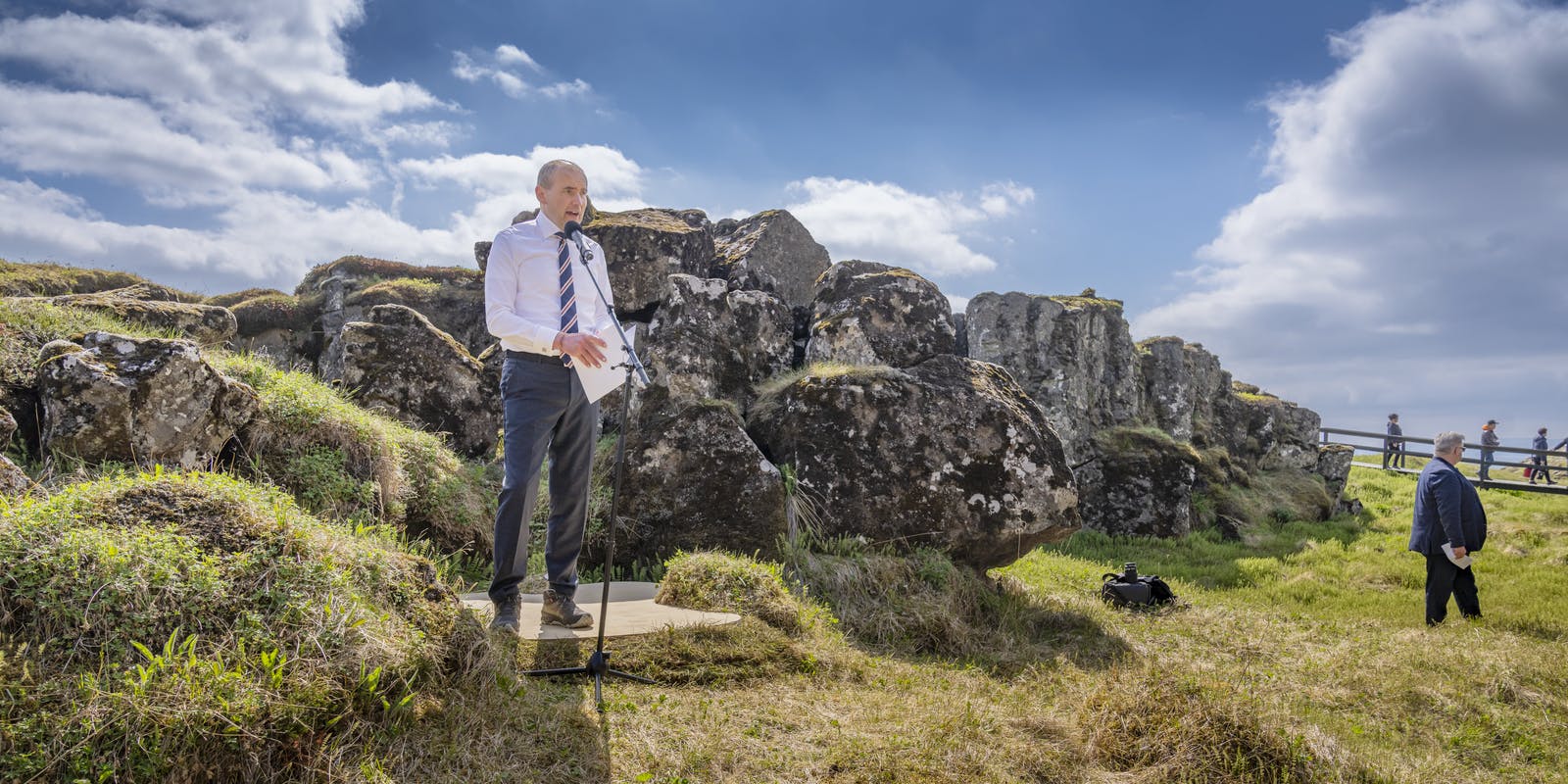
Drekkingarhylur – The drowning pool
During the era when witches were being burned, women were drowned in Drekkingarhylur. In those days, drowning was a common method of execution. Women accused of adultery were tied up in a bag, pushed into the pool, and held underwater until they died. Men, on the other hand, were hanged or beheaded. The last execution in Iceland occurred in 1830, and the practice has been banned ever since. The mistreatment of innocent and often abused women executed at Þingvellir remains a dark chapter in Icelandic history.
Öxarárfoss Waterfall
Öxarárfoss is the only waterfall in Þingvellir National Park, flowing from the river Öxará over Almannagjá. Standing at just 14 meters high, it is one of the smaller waterfalls in Iceland. Interestingly, Öxarárfoss is not entirely a natural creation.
The Saga Sturlunga, written in the 12th and 13th centuries, records that the river Öxará was artificially diverted into Almannagjá via Öxarárfoss shortly after the establishment of Alþingi in 930. This diversion aimed to provide water for the members and visitors of the Icelandic parliament. Although no channels, dykes, or diversion ditches have been discovered related to this ancient project, the sagas' accounts may be accurate, as it appears the river could have been easily diverted with minimal construction.

5 Facts About Historical Þingvellir
- According to folklore, the river Öxará changes to wine on New Year's Eve.
- Before Þingvellir became a national park in 1930, it used to be a place where people gathered for big events.
- Driving to Þingvellir takes only 45 minutes from Reykjavík.
- The famous television show Game of Thrones, was filmed in Þingvellir and in other parts of Iceland.
- There are roughly 172 higher plant species found in Þingvellir National Park, which includes about 40% of the flora in Iceland.







